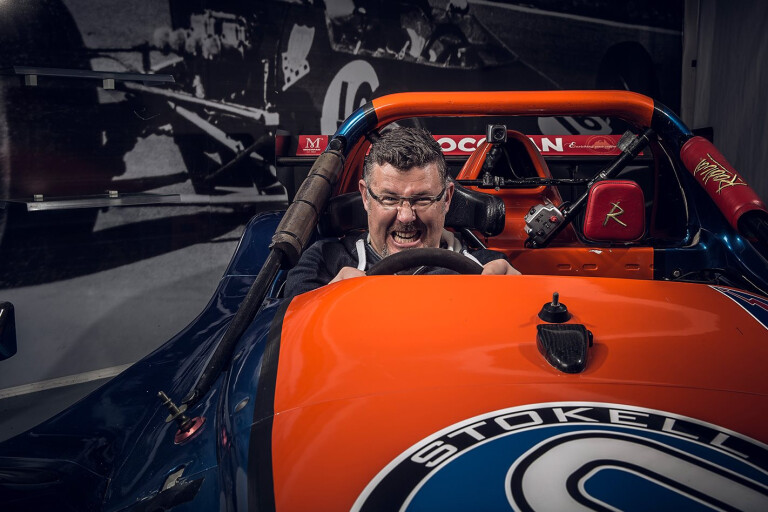
First published in the August 2015 issue of Wheels magazine, Australia's best car mag since 1953.
Getting into vinyl kicked off a racy career.
PLENTY of us spent our school years sketching racing cars, doodling sponsor designs and plastering car, surf clothing and flavoured milk stickers over everything. Brett Rogers, 41, now does it for a living, as one of a small handful of specialists in motorsport design and signage.
These days, that means vinyl-wrapping, a technology that originated about 20 years ago for German taxis. Wrapping’s advantages of quick colour changes, the precision of printed graphics and vastly less expense than sign-writing – or painting – proved even more applicable to motorsport.
Rogers practises what he preaches, owning a Mitsubishi Evo VI time-attack car and co-owning, with Paul Stokell, a Radical SR3. Rogers’ race-wrapping portfolio has included V8 Supercars, Australian GT and Carrera Cup cars, and usually totals three dozen or more vehicles a year.
Rogers got into the graphics industry via two wheels. “I grew up in motorsport, raced karts and hillclimb. I was racing mountain and road bikes at an elite level and got a job as a bicycle designer at Merida Bikes.
“I went to the US in 2000 to race mountain bikes for a season. I got home and thought, ‘What am I going to do with my life?’. I enrolled as an adult student in a college of design.”
Rogers designed a graphics package for a Suzuki Swift Sport show car. The prize-winning wrap wasn’t without its challenges. “The vinyl technology was still pretty average: If you made a mistake you had to cut it, or reprint it.”
Rogers moved to Sherrin Motorsport, then promoter of the Porsche Carrera Cup and Mini Challenge series. “I was doing a lot of sponsorship proposals, putting a commercial value to each sticker on the car, which was a very good insight for what I do now.”
Around 2008 came a wrap revolution, with air-release vinyl. “It has a cross-hatched pattern, which disperses any air bubbles as you put down the vinyl.”
Rogers aims to keep graphics bold and simple, recognising that the job is to represent a brand, on a vehicle travelling at high speed – there’s little time for design nuance at 200km/h. The client-approved design is printed in full-length sections on a machine capable of continuous-printing an entire 50-metre roll.
The vinyl is printed and applied in full-length sections, with panel shut-lines cut in later. Rogers likes to have a car for three days, which includes the final post-heating process that cures the wrap material against the surface.
The typical job, from art concept to final wrap, costs about $4500. Even under the Aussie sun, Rogers says a wrap should stay colour-stable and intact for four to five years.
One to go, thanks
Vinyl-wrapping a vehicle usually takes three days, but race-wrapper Brett Rogers knows motor racing better than that. “I got a call on a Thursday afternoon; a V8 Supercar had to leave for Abu Dhabi on the Saturday afternoon. I finished the design at 11pm, started printing at 2am Friday, and finished two full wraps and spares at 3 o’clock Saturday afternoon. That was evil.”

COMMENTS